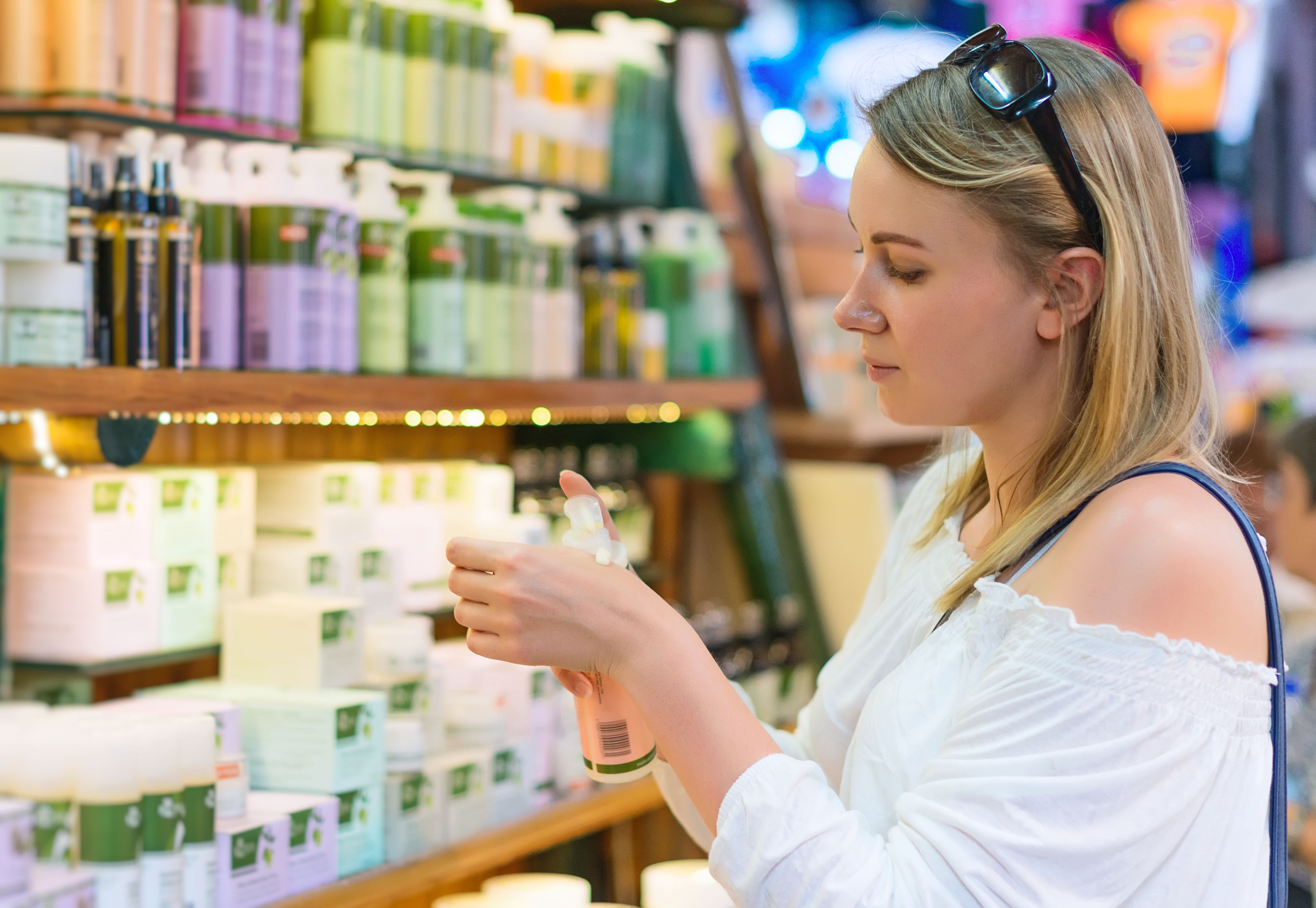- Case-Based Roundtable
- General Dermatology
- Eczema
- Chronic Hand Eczema
- Alopecia
- Aesthetics
- Vitiligo
- COVID-19
- Actinic Keratosis
- Precision Medicine and Biologics
- Rare Disease
- Wound Care
- Rosacea
- Psoriasis
- Psoriatic Arthritis
- Atopic Dermatitis
- Melasma
- NP and PA
- Skin Cancer
- Hidradenitis Suppurativa
- Drug Watch
- Pigmentary Disorders
- Acne
- Pediatric Dermatology
- Practice Management
- Prurigo Nodularis
- Buy-and-Bill
Publication
Article
Dermatology Times
Quality skincare on a budget
Author(s):
How do you advise patients to select good skincare on a budget? Dr. Draelos covers this and more in this month's Cosmetic Conundrums.
How do you advise patients to select good skincare on a budget? (dmitrimaruta - stock.adobe.com)

Dr. Draelos

Q. How do you advise patients to select good skincare on a budget?
Proper moisturizer and cleanser selection are important to patients with a variety of dermatoses; however, cost can be a significant consideration. Patients may mistakenly think expensive products are necessary to maintain control of their disease and prevent recurrence. This is not true. Thus, it is important for the dermatologist to educate patients on selecting OTC products that can improve their skin conditions.
The most important selection for any patient is a good cleanser. Skin cleansing is necessary for good hygiene, but excessive detergency can remove the intercellular lipids and induce barrier damage. The least expensive cleansers are bar cleansers, but many dermatologists confuse a bar cleanser with soap. The only soap bar that is currently widely distributed is Ivory soap, which is a poor choice for most patients with skin disease. Any bar cleanser that is labeled a “beauty bar” can be used by most patients.
Liquid cleansers are more expensive per wash than most bar cleansers. They do not necessarily possess less detergency, they are just liquid forms of the bar cleansers. Part of the cleansing ability of a detergent is how much is used. It is easier to dispense too much liquid cleanser and harder to dispense too much bar cleanser. Thus, bar cleansers may be better in some instances.
Finally, the most important part of cleansing is not the cleanser, but the water. Eighty percent of cleansing occurs with water, while the remaining 20% is attributed to the cleanser. The temperature of the water is more important than the cleanser. Hot water will remove more intercellular lipids than cold water. Abundant water will remove more intercellular lipids than sparse water. Minimizing water contact and lowering the temperature is actually more important than cleanser selection.
Q. What is the difference between lower cost and expensive moisturizers?
After cleansing, the second most important skincare purchase is a moisturizer. There may be formulation differences between lower cost and expensive moisturizers. The primary ingredient in any lotion, the most popular moisturizer formulation purchased, is water. Water does not moisturize the skin, but it is important in getting the moisturizing ingredients on the skin and allowing them to spread to a thin layer. Lower-cost lotions may contain more water, meaning the consumer is getting less moisturization for their dollar. It is best not to purchase the least expensive lotion on the shelf.
Conversely, ultra-high-priced moisturizers may contain more elaborate packaging and better product aesthetics, which do not affect skin moisturization. It is probably best to avoid these expensive boutique moisturizers. The best moisturizers are moderately priced; however, I would recommend the brand name over the house generic because the brand named products have been through more tests, which is not typical of house brands. Even though the labels may read the same, the actual concentration and quality of ingredients may differ, allowing the moisturizers to vary significantly in performance.
Q. Are expensive cosmetics better for skin?
This is a simple question to answer. Expensive cosmetics are not better for the skin. The most expensive part of a cosmetic is the packaging and the fragrance, neither of which have any effect on the functioning of the product.
Q. Why may expired sunscreen be ineffective?
Sunscreens are expensive and seem to last forever, probably because they are seldomly used! It is a shame to throw away perfectly good expired sunscreen. Or, is the expired sunscreen not still perfectly good? Simply stated, the expired sunscreen is no good and should be thrown away.
Many of the newer sunscreen formulations contain inorganic filters, such as zinc oxide and titanium dioxide. These filters are thought to be safer and more natural, since they do not undergo chemical changes when exposed to UV radiation like the organic filters. There are many challenges when formulating with zinc oxide and titanium dioxide, which are minerals ground to a fine powder. The particulate is then added to a lotion base and must remain suspended in the lotion without clumping, a phenomenon known as flocculation, or sinking to the bottom, a phenomenon known as sedimentation. In a stable suspension, the sunscreen active particulate should remain evenly suspended throughout the bottle. However, as the suspension becomes unstable with time, the particles will clump and settle, diminishing the SPF of the sunscreen.
The organic filters, such as oxybenzone, avobenzone, octyl salicylate, homosalate, etc., are chemically reactive substances that undergo structural changes when absorbing UV radiation. Once a photon of UV radiation is absorbed, the filter has been used up and can no longer function as a photoprotectant. These chemical changes can occur in the bottle. Most organic filters are also oily substances that must be emulsified with the water soluble ingredients in the formulation to create stable lotions. Over time the emulsifier may fail and the emulsion will break down.
Expired sunscreens should be discarded because of possible product instability that no longer allows the product to perform up to the labeled SPF. Manufacturers determine expiration dating based on extensive stability testing involving cycling the product between hot and cold temperatures to accelerate instability. The only way for the consumer to determine the inability of the sunscreen to provide the desired photoprotection is to get sunburned! For this reason, all expired sunscreens should be thrown away.
Q. Is there any way to improve the ability of sunscreen to remain on the skin?
Once properly applied, the most common reason sunscreens fail is their inability to remain on the skin. The ability of a product to remain in place once applied is known as substantivity. Sunscreens are designed as substantive formulations and this is now communicated to the consumer as water resistant for a certain number of minutes. The higher the number of minutes, the more substantive the formulation, and the longer the sunscreen will remain in place. Currently, the highest water resistant rating is for 80 minutes.
The condition of the underlying skin over which the sunscreen is placed is also important. For example, a sunscreen will not stay in place on the skin when applied over a moisturizer. Moisturizers place an oily film over the skin preventing the sunscreen from sticking. Sunscreens should be placed on clean skin. After sun exposure, the sunscreen can be washed away and moisturizers applied.
In addition, the sunscreen application method is important. The sunscreen should be rubbed into the skin well and allowed to dry thoroughly. The film is still moveable and can be rubbed away until set. More rubbing is required to achieve an even film in hairy areas.
Q. Can body sunscreens be used on the face?
Sunscreen formulations have been developed for various body areas based on the needs of the particular area. In general, a sunscreen should be used in the area labeled on the packaging. For example, sunscreens for the face should be tested to insure they are noncomedogenic and nonacnegenic. This is not as big a concern for the body so body sunscreens may not undergo comedogenicity and acnegenicity testing.






